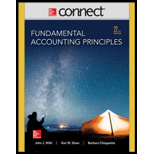
Concept Introduction:
Income statement: The income statement shows details of net revenue, expenses and profit for the period. As per IFRS the expenses have to disclosed separately for income tax, finance costs and other costs
Financial Statements: There are three basic financial statements which are
Common Size Percent: This is a method of analysis of financial statements by comparing two or more financial statements of same company or different companies. All figures are shown as percentage of base value. In case of income statement each item of income statement is shown as percentage of sales value. In case of
The formula of calculation of common size percent is shown below
Trend Percent: This is method of analysis of financial statements by comparing two or more financial statements of same company or different companies. The base year figures are shown as 100% for all items. The comparative year figures are shown as percentage of base value. For example sales of base year will be shown as 100% and comparative years will be calculated as below
To Prepare:
Trend percent for Net Sales
Want to see the full answer?
Check out a sample textbook solution
Chapter 17 Solutions
FUND.ACCT.PRIN -ONLINE ONLY >I<
- Thane Company is interested in establishing the relationship between electricity costs and machine hours. Data have been collected and a regression analysis prepared using Excel. The monthly data and the regression output follow: Month Machine Hours Electricity Costs January 2,000 $ 18,950 February 2,400 22,100 March 1,400 14,050 April 2,600 24,100 May 3,300 28,800 June 2,800 23,100 July 3,600 25,300 August 3,000 23,300 September 1,500 16,600 October 3,200 27,100 November 4,200 32,100 December 3,700 28,300 Summary Output Regression Statistics Multiple R 0.960 R Square 0.921 Adjusted R2 0.913 Standard Error 1,545.17 Observations 12.00 Coefficients Standard Error t Stat P-value Lower 95% Upper 95% Intercept 7,465.99 1,566.61 4.77 0.00 3,975.37 10,956.62 Machine Hours 5.76 0.53 10.78 0.00 4.57 6.95 Based on the results of the regression analysis, the estimate of electricity costs in a month with 1,700 machine hours…arrow_forwardThe direct materials price variance is?arrow_forwardPlease explain the solution to this general accounting problem with accurate explanations.arrow_forward
- A company can sell all the units it can produce of either Product M or Product N but not both. Product M has a unit contribution margin of $32 and takes six machine hours to make, while Product N has a unit contribution margin of $45 and takes nine machine hours to make. If there are 10,800 machine hours available to manufacture a product, income will be_. A. $3,600 more if Product M is made B. $3,600 less if Product N is made C. $2,000 less if Product M is made D. the same if either product is made.arrow_forwardHii teacher please provide for General accounting question answer do fastarrow_forwardCan you explain the correct approach to solve this general accounting question?arrow_forward

 AccountingAccountingISBN:9781337272094Author:WARREN, Carl S., Reeve, James M., Duchac, Jonathan E.Publisher:Cengage Learning,
AccountingAccountingISBN:9781337272094Author:WARREN, Carl S., Reeve, James M., Duchac, Jonathan E.Publisher:Cengage Learning, Accounting Information SystemsAccountingISBN:9781337619202Author:Hall, James A.Publisher:Cengage Learning,
Accounting Information SystemsAccountingISBN:9781337619202Author:Hall, James A.Publisher:Cengage Learning, Horngren's Cost Accounting: A Managerial Emphasis...AccountingISBN:9780134475585Author:Srikant M. Datar, Madhav V. RajanPublisher:PEARSON
Horngren's Cost Accounting: A Managerial Emphasis...AccountingISBN:9780134475585Author:Srikant M. Datar, Madhav V. RajanPublisher:PEARSON Intermediate AccountingAccountingISBN:9781259722660Author:J. David Spiceland, Mark W. Nelson, Wayne M ThomasPublisher:McGraw-Hill Education
Intermediate AccountingAccountingISBN:9781259722660Author:J. David Spiceland, Mark W. Nelson, Wayne M ThomasPublisher:McGraw-Hill Education Financial and Managerial AccountingAccountingISBN:9781259726705Author:John J Wild, Ken W. Shaw, Barbara Chiappetta Fundamental Accounting PrinciplesPublisher:McGraw-Hill Education
Financial and Managerial AccountingAccountingISBN:9781259726705Author:John J Wild, Ken W. Shaw, Barbara Chiappetta Fundamental Accounting PrinciplesPublisher:McGraw-Hill Education





